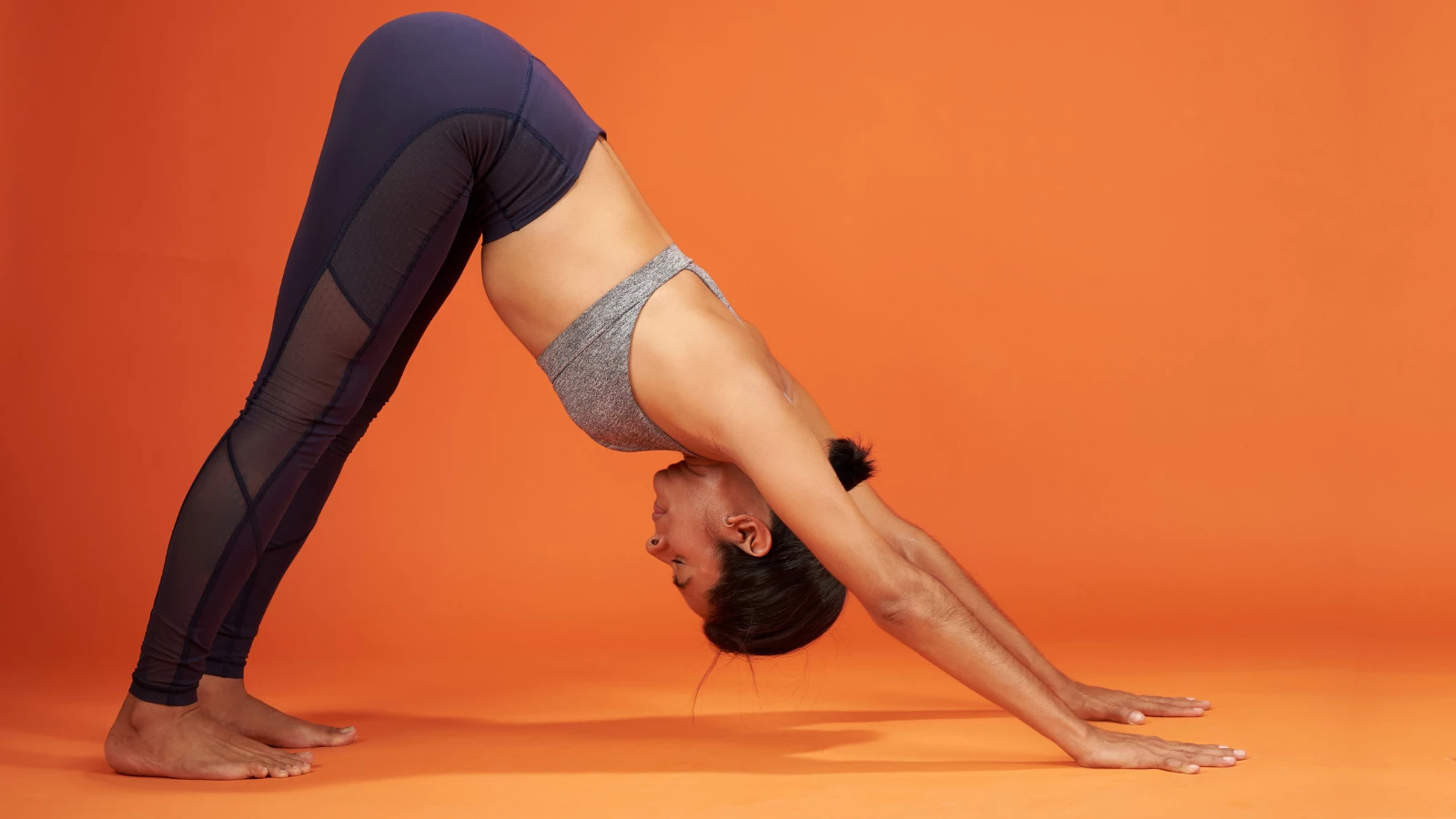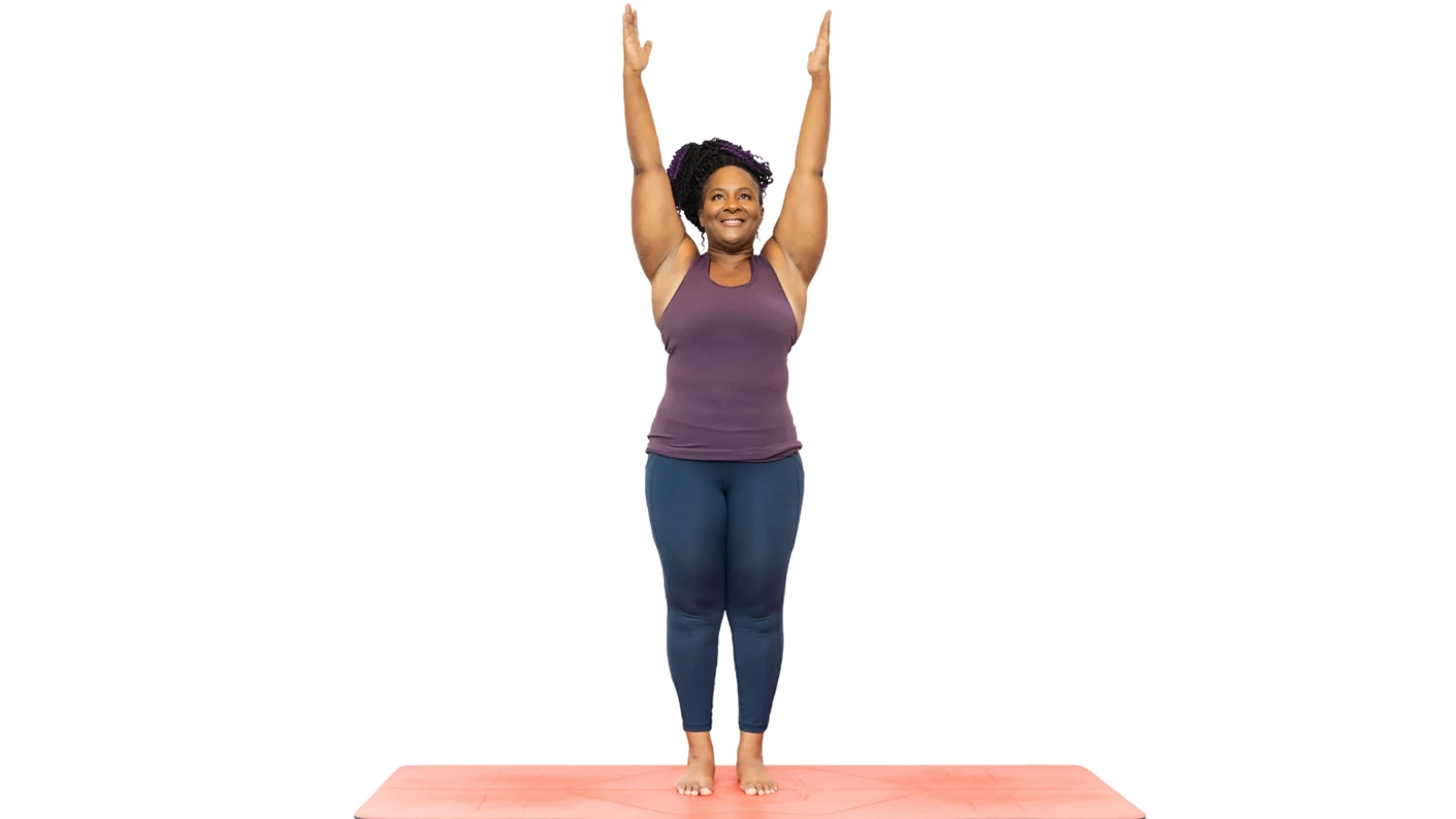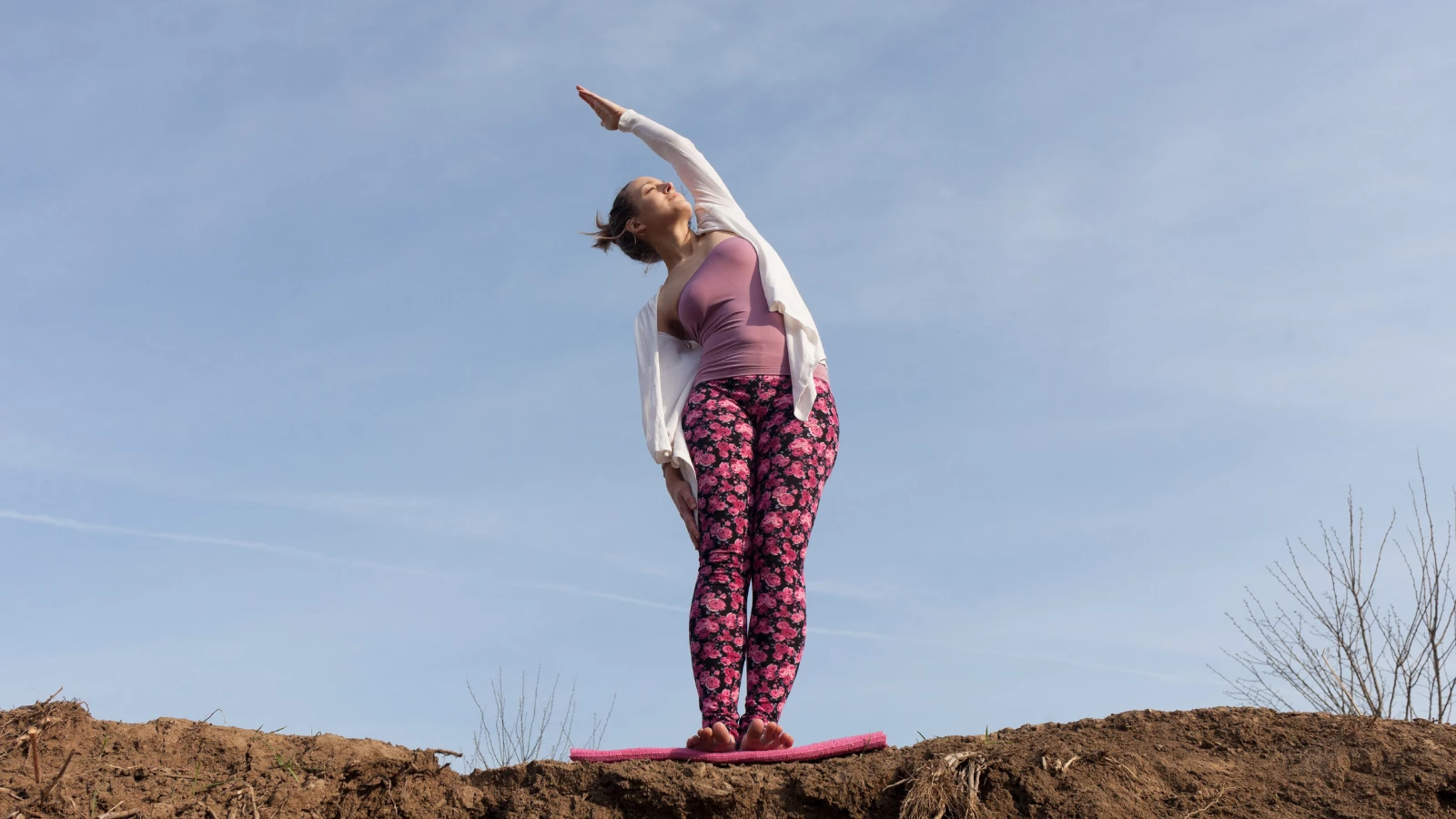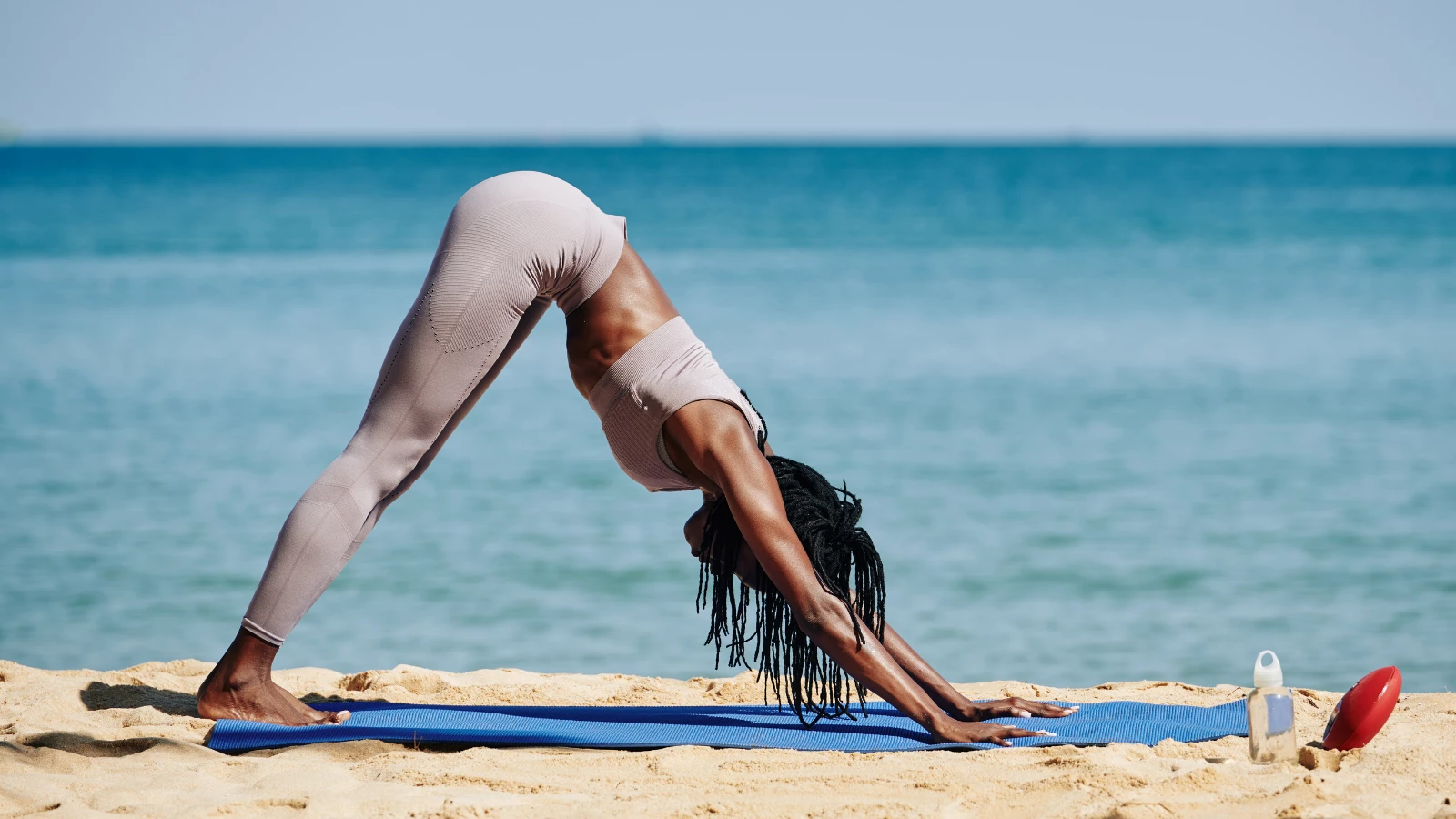Yoga Warm-up: 3 Basic Fuzz-Busting Poses

What are your go-to poses right after you step onto your mat? I like to warm up with a “gooey” Downward Facing Dog Pose (Adho Mukha Svanasana). By gooey, I mean that I warm up with lots of movement.
I mobilize all my joints, including those in my arms and legs, and all my vertebral joints. I stretch both sides of my body, but I don’t worry about stretching symmetrically from one side to the other. The point is to check in with my body and listen to what it needs on a given day. Because it’s so easy to stretch almost everything in Downward Facing Dog Pose, it’s my favorite yoga warmup pose.
Especially if you practice first thing in the morning, your body needs to ease into yoga practice. Warming up is essential, and it feels good too. After a night of relative immobility, the fascia (the connective tissue that surrounds the muscles) forms a layer of what anatomist Gil Hedley calls “fuzz.”
Gil Hedley Explains the Fuzz: Fascia and Stretching
The tiny fibers Hedley calls “fuzz” form on the sliding surfaces between your muscles. This is a natural process that happens whenever we are immobile for a while. However, the fuzz inhibits the muscles’ ability to slide against each other, instead causing them to adhere to each other.
Stretching and movement melt the fuzz, allowing our muscles to slide over one another again. This is why we’re usually more flexible in the afternoon than we are in the morning. Our bodies have had a chance to move around and melt at least some of the fuzz. If we don’t make a point to move and stretch on a given day, the fuzz starts to thicken, making it harder to dissolve when we do decide to practice.
For this reason, even if you can’t do a full-on yoga practice, it’s a good idea to practice a yoga warmup pose (or two or three). This will keep the fuzz at bay so that when you do make time for formal practice, your soft tissue will be more amenable to it.
How to Break Up Fuzz in 3 Yoga Poses
In addition to Downward Facing Dog Pose, there are a few other poses that make great yoga warmup poses if you don’t have time for a full-on practice. You might want to have a yoga mat and yoga strap handy. Here are three of my favorites:
Upward Hands Pose (Urdhva Hastasana): Urdhva Hastasana focuses on axial extension, but you can add a backbending element to it as well.

- Stand in Tadasana.
- Plant your feet into the floor and extend your arms upward, alongside your ears.
- Experiment with different hand positions—palms together, yoga strap between the hands, fingers clasped with palms facing upward.
- Take 5 to 10 breaths in each position and then return to Tadasana, arms at your sides.
- If you’d like to add a backbending element to the pose, while your arms are extended upward, root your feet into the floor and extend your torso backward. Make sure to keep your head continuous with your spine. In other words, don’t allow the head to drop back. Instead, keep the head neutral. Take a few breaths here and return to Tadasana, releasing your arms back to your sides.
Palm Tree Pose (Talasana): Talasana zeroes in on the sides of the body. While you can stretch your sides to some extent in Downward Facing Dog Pose, Talasana stretches the entire lateral line of the body, from the outsides of the feet to the hands.

- Stand in Mountain Pose (Tadasana) with your feet hip-width apart.
- Extend your arms upward, alongside your ears. Clasp your right wrist with your left hand. Feel free to hold a yoga strap between your hands in this pose instead of clasping the wrist. Using a strap allows your chest to expand more easily.
- Ground your right foot and extend the torso to the left. Feel free to move around in this pose, exploring spinal rotation as you stretch laterally.
- After 5 to 10 breaths, return to Tadasana.
- Practice Talasana on your other side.
Downward Facing Dog Pose: As I mentioned, Downward Facing Dog Pose is a great all-over stretch. If you’re practicing it as a fuzz-busting pose, play with it. Move through all your joints, and stay in motion. Don’t worry about form.
Think about when your dog or cat does this pose. They do what feels good, not what they think looks good. I like to practice a Half-Dog Pose (Ardha Adho Mukha Svanasana) with my feet on the floor and my hands on the kitchen counter while I’m waiting for my tea water to boil in the morning.

- Begin in Tabletop Pose (Bharmanasana).
- Turn your toes under and push back into Downward Facing Dog Pose, raising the pelvis high.
- Don’t worry about touching your heels to the floor. Pump your legs and keep your knees bent.
- Explore side bending and twisting. Stretch your legs, one at a time, up toward the ceiling. Be creative and do what feels good.
- After a few breaths, return to Tabletop Pose and move into Child’s Pose (Balasana) if you like.
This is a nice, well-rounded fuzz-busting practice for first thing in the morning. It can stand on its own or serve as a warmup for the rest of your regular yoga practice.
Also, read...
Teaching Svadhyaya: 3 Ways to Encourage Self-Study in Yoga
In Celebration of Gray-Haired Yoga – Busting the Myth of the Yoga Body
Related courses

Charlotte Bell began practicing yoga in 1982 and began teaching in 1986. She was certified by B.K.S. Iyengar in 1989 following a trip to Pune. In 1986, she began practicing Insight Meditation with her mentors Pujari and Abhilasha Keays. Her asana classes blend mindfulness with physical movement. Charlotte writes a column for Catalyst Magazine and serves as editor for Yoga U Online. She is the author of two books: Mindful Yoga, Mindful Life, and Yoga for Meditators, both published by Rodmell Press. She also edits Hugger Mugger Yoga Products’ blog and is a founding board member for GreenTREE Yoga, a non-profit that brings yoga to underserved populations. A lifelong musician, she plays oboe and English horn in the Salt Lake Symphony and the folk sextet Red Rock Rondo whose 2010 PBS music special won two Emmys.



